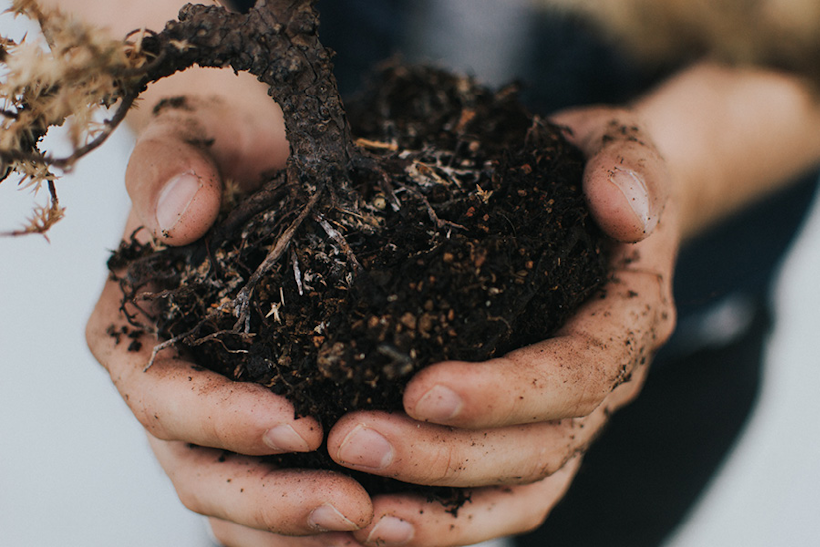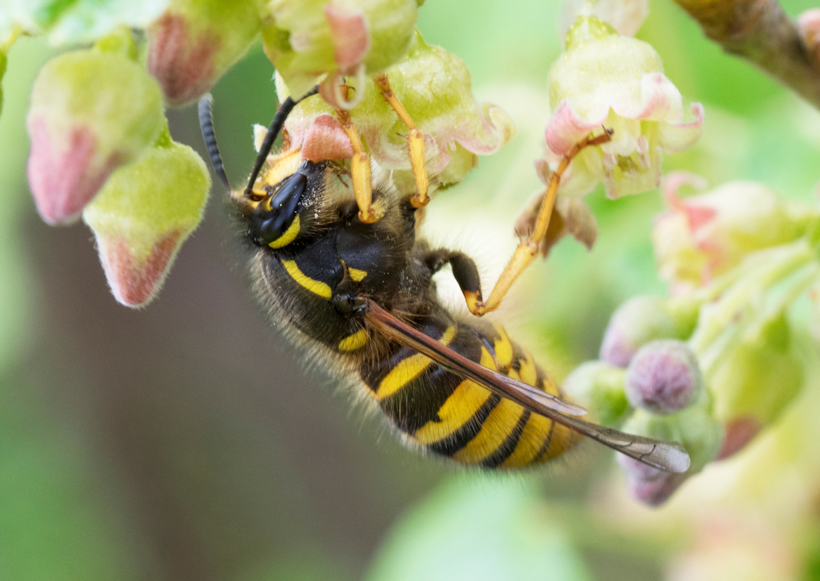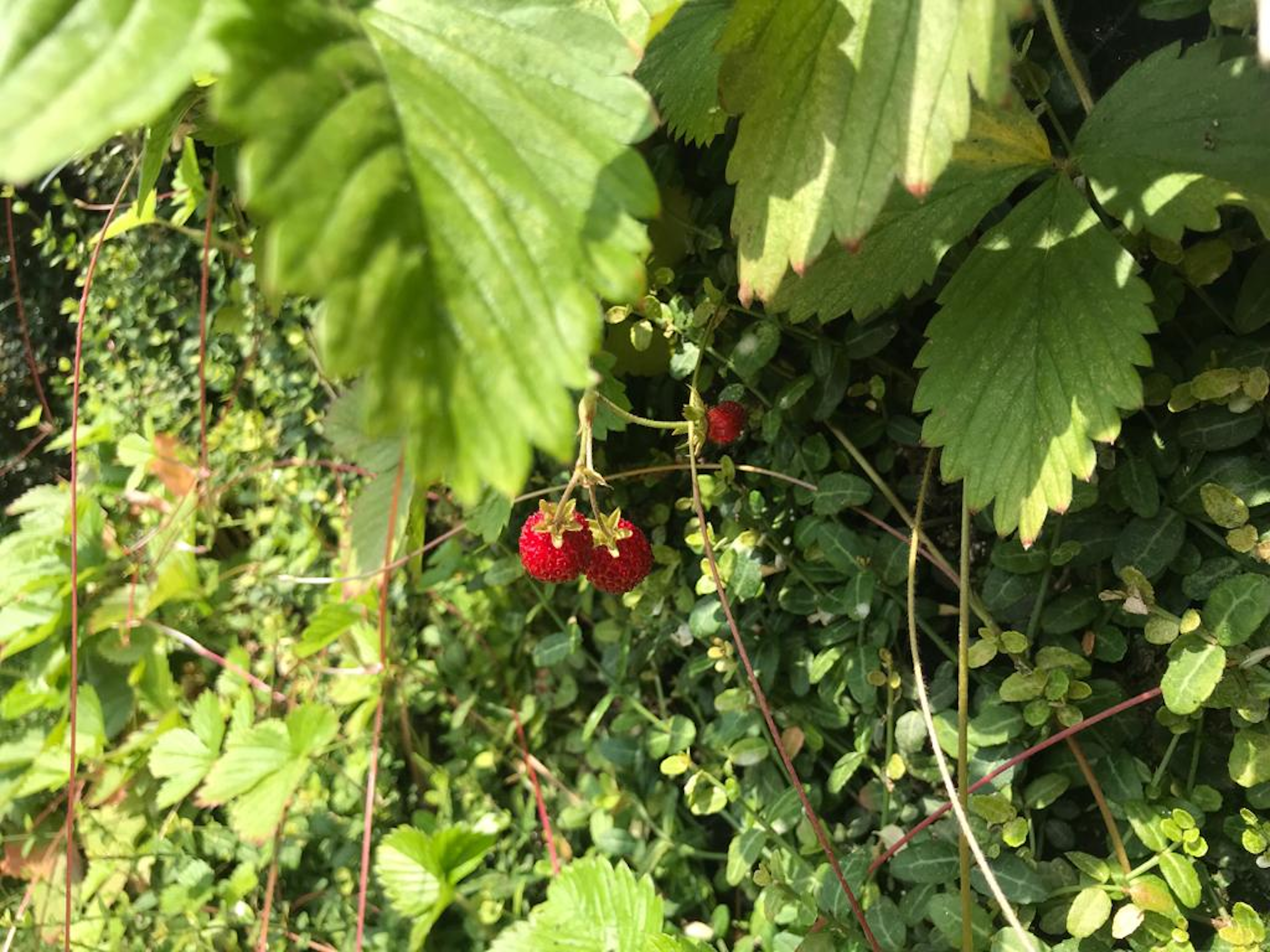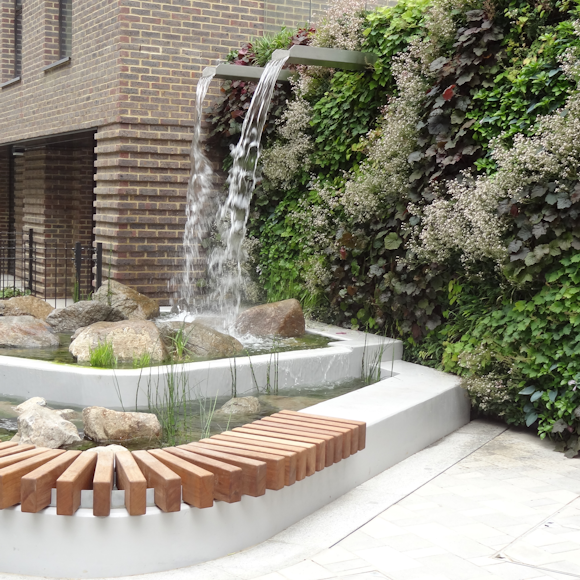What to Expect from Your Living Wall in the Summer
And How to Maintain it During These Months
As the summer rolls in, bringing with it longer days and warmer temperatures, your Living Wall will take on a vibrant and flourishing presence. However, with the changing season, you might be curious about what to expect from your living wall throughout the warmer months and how to ensure it is maintained for optimal yield and vitality.
In this blog, we will explore what plants and wildlife to anticipate from your living wall during summer, as well as special considerations for its maintenance to maximise its potential.
Pre-Summer Living Wall Maintenance
As the weather transitions into mid/ late spring, it is common practice to prune back a living wall to prepare it for the upcoming summer months. This pruning process involves the removal of any old or spent foliage, making room for new growth, and ensuring optimal conditions for the plants.
Pruning plays a crucial role in maintaining the health and vitality of your living wall. By removing excess foliage, light can penetrate deeper into the wall, reaching the lower parts of the vegetation. This is particularly important for the photosynthesis process, as sunlight is essential for plants to produce energy and thrive. Adequate light exposure encourages robust growth and helps maintain the overall lush appearance of the living wall.
In addition to allowing light penetration, pruning also facilitates air movement within the living wall. By thinning out the foliage, air circulation is improved, reducing the risk of stagnant air pockets, and creating an environment less favourable for the development of mildew or other fungal issues. Adequate airflow around the plants promotes overall plant health.
Summer Living Wall Maintenance & Plant Life
As June arrives, your living wall should showcase a vibrant display of new growth. The plants within the wall will have benefited from the longer daylight hours and increased warmth, resulting in lush foliage and vigorous development. It's exciting to witness the emergence of flowering species, adding an extra layer of beauty and ecological significance to your living wall.
As the summer months progress, special attention must be given to the irrigation system of the living wall. With the warming weather, the soil tends to dry out more quickly, and the plants experience increased transpiration, leading to higher water requirements. It is essential to calibrate the irrigation timings to accommodate these seasonal changes, ensuring that the correct amount of water is being delivered to the soil.

Optimising the irrigation system serves a dual purpose: providing sufficient moisture to the plants for maximum growth and preventing the waste of water. Overwatering can lead to waterlogged soil and potential damage to the plant roots, while under-watering can result in stress and wilting. Striking the right balance is crucial for maintaining the health and vitality of the living wall.
Regular monitoring of soil moisture levels is essential during this time of the year. This can be done using a combination of visual inspection and moisture sensors. By staying attentive to the moisture content of the soil, adjustments can be made to the irrigation schedule as needed, ensuring that the plants receive adequate hydration without excessive water runoff or waste.
By paying special attention to the irrigation system and adapting it to the changing needs of the living wall, you can support the healthy growth and development of the plants, while conserving water resources. This proactive approach helps maintain the lushness and vitality of the living wall, creating an aesthetically pleasing and environmentally sustainable feature in your space.
What Plant Life Can You Expect to See on Your Living Wall in Summer?
In the summer, a range of flowering seasonal plants will appear, providing nectar and habitats for insects and wildlife. Here are our frequently used summer plants, and their benefits:
- Hypericum Hidcote (St John’s Wort) – A source of berries for birds and nectar for pollinators.
- Hyssopus Officinalis (Hyssop) – A purple-flowered shrub that provides a source of nectar.
- Luzula Nivea (Snow-white Wood-rush) – A local northern English flora plant which provides nectar and habitats to insects.
- Mentha Spicta (Spearmint) – Provides forage for bees and other pollinators, and also provides a natural habitat.
- Thymus Vulgaris (Common Thyme) – A bushy flora plant providing forage and natural habitat.
- Hebe Pingufolia ‘Pagei’ (Shrubby Veronica) (Also common in spring) - An evergreen ecological habitat.
- Armeria Maritima (Sea Thrift) (Also common in spring) – Perfect foraging plant and a source of nectar.
- Vinca minor ‘Bowles Purple’ (Bowles Periwinkle) (Also common in spring) – An evergreen plant with continual flowers through the summer.
- Geranium Macrorrhizum (Bigroot Geranium) – Excellent habitat for butterflies and local UK ecology.
- Hebe ‘Red Edge’ (Shrubby Veronica) – An evergreen species that provides an ecological habitat.
- Primula Chungensis (Candelabra Primula) – A yellow flora plant that provides a source of nectar and insect habitat.
- Geranium Rozanne (Cranesbill) – A vibrant purple flora plant that provides habitat for butterflies and local UK ecology.

Pest Control for Living Walls in the Summer
In the summer months, the emergence of garden pests, such as Aphids and Vine Weevils, becomes evident in the living wall. Vigilance is key in spotting the early signs of these pests to prevent a population spike. The primary method of pest control employed is biocontrol, which involves introducing natural predators to combat the issues.
To address Aphids, Lacewings or Ladybirds are commonly introduced as predators. These beneficial insects help keep the Aphid population in check by feeding on them. Similarly, for Vine Weevils, the focus is on controlling the grubs that reside in the soil. A microscopic worm is introduced to the soil via the irrigation system, which acts as a biocontrol agent. These worms target and feed on the Vine Weevil grubs, preventing damage to plant roots.
To ensure effective pest control, biocontrol measures are typically applied every 6 - 8 weeks. Regular application of biocontrol agents helps maintain a balanced ecosystem within the living wall and minimizes the potential damage caused by pests.
Through diligent inspections and the implementation of biocontrol strategies, your living wall can effectively manage Aphids and Vine Weevils, ensuring the health and vitality of the plant species. By relying on natural predators and environmentally friendly approaches, the living wall can thrive while minimizing the need for harsh chemical interventions.
Nesting Animals Expected in Living Walls During Summer Months
During the nesting season, which typically spans from March to August, it is common to observe Blue Tits nesting in your Living Wall. These charming birds find the vertical structure of the wall an attractive habitat for raising their young. After hatching, the fledglings remain in the nest for approximately three weeks, allowing for delightful sightings of these young birds before they eventually leave the nest in June.
Design a Living Wall with Viritopia and Reap the Benefits
Are you in the early stages of development? Are you looking to capitalise on environmental assets? Are you interested in learning more about living walls? Then look no further. Our team at Viritopia have you covered.
At Viritopia, we use over 20 years of experience designing and maintaining green infrastructure, we form detailed analyses on how a scheme is to meet regulation. We aid a faster planning process and provide you with what’s needed to take your project to the next level. Learn more about our living wall consultancy right here.


